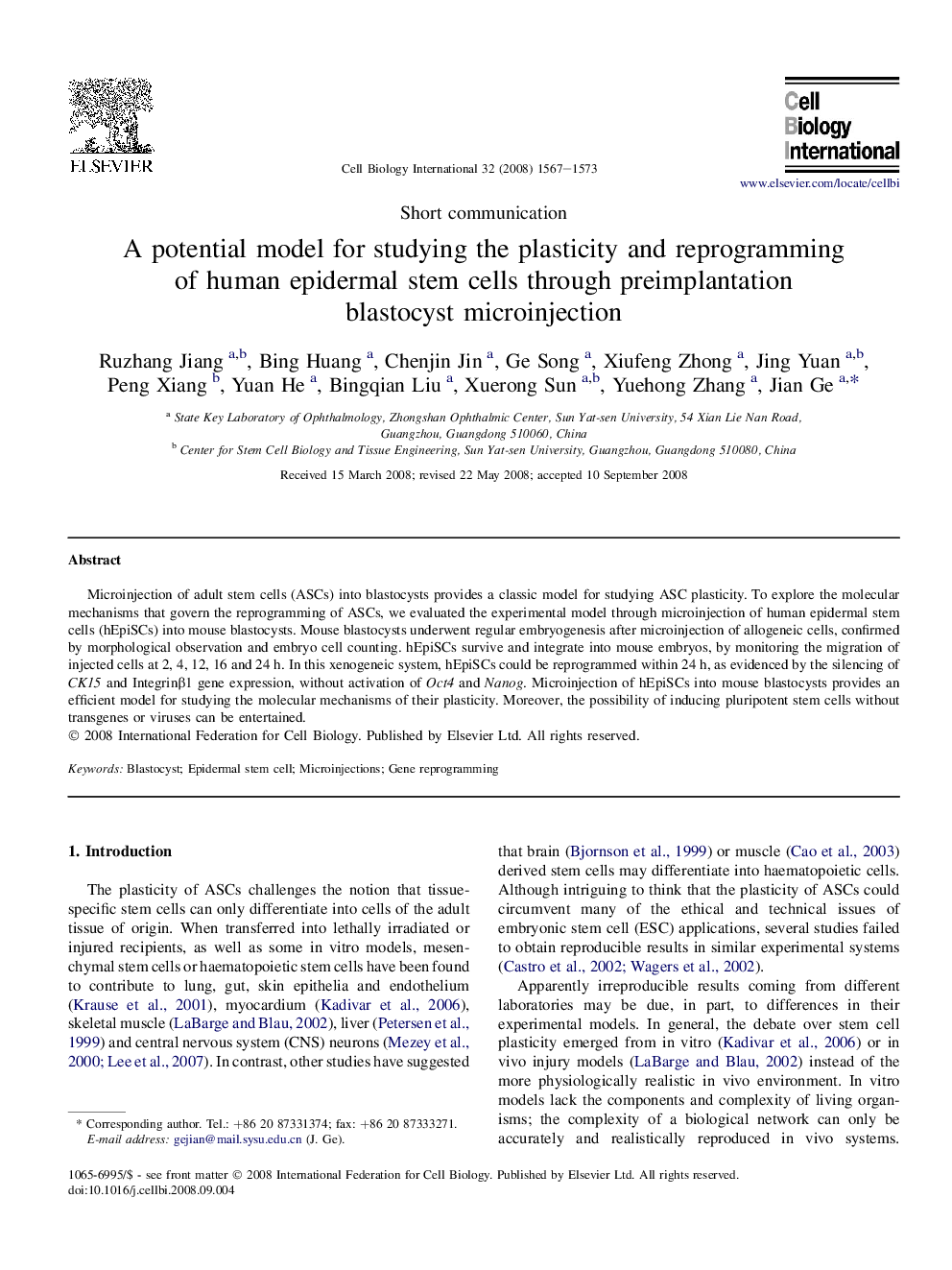| Article ID | Journal | Published Year | Pages | File Type |
|---|---|---|---|---|
| 2067151 | Cell Biology International | 2008 | 7 Pages |
Abstract
Microinjection of adult stem cells (ASCs) into blastocysts provides a classic model for studying ASC plasticity. To explore the molecular mechanisms that govern the reprogramming of ASCs, we evaluated the experimental model through microinjection of human epidermal stem cells (hEpiSCs) into mouse blastocysts. Mouse blastocysts underwent regular embryogenesis after microinjection of allogeneic cells, confirmed by morphological observation and embryo cell counting. hEpiSCs survive and integrate into mouse embryos, by monitoring the migration of injected cells at 2, 4, 12, 16 and 24 h. In this xenogeneic system, hEpiSCs could be reprogrammed within 24 h, as evidenced by the silencing of CK15 and Integrinβ1 gene expression, without activation of Oct4 and Nanog. Microinjection of hEpiSCs into mouse blastocysts provides an efficient model for studying the molecular mechanisms of their plasticity. Moreover, the possibility of inducing pluripotent stem cells without transgenes or viruses can be entertained.
Related Topics
Life Sciences
Biochemistry, Genetics and Molecular Biology
Biophysics
Authors
Ruzhang Jiang, Bing Huang, Chenjin Jin, Ge Song, Xiufeng Zhong, Jing Yuan, Peng Xiang, Yuan He, Bingqian Liu, Xuerong Sun, Yuehong Zhang, Jian Ge,
